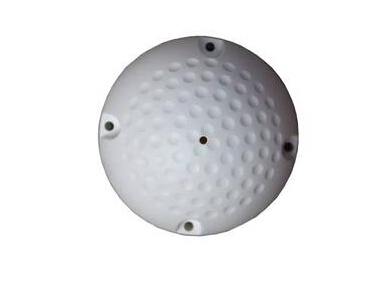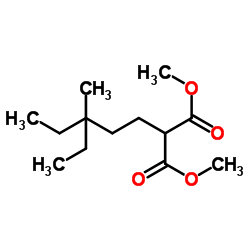Gathering the sound of live gadgets, the principle is that the microphone (microphone) and the amplifier form the smallest system of the pickup. The design of the circuit and the chip used have a great influence on the sound quality. The general pickup uses three-wire, four-wire terminals, positive power supply, positive audio, and common ground. Or the audio negative electrode and the power negative electrode are separated. Pickup products are usually divided into two types: active and passive. According to the actual application performance, there are vocal guitar pickups and monitoring pickups. What is a pickup? It is a pickup accessory for recording in synchronous monitoring systems. Graphically speaking: The camera is the eye and the pickup is the ear. DVRs store sounds and images, and monitors and speakers are used for playback.

Is the microphone a microphone? Not all right. The pickup not only includes a high-sensitivity microphone, but also incorporates a preamplifier circuit. Therefore, the pickup can be directly connected to the DVR, active speakers, headphones, sound cards, etc., and the microphone needs to be connected to the amplifier. In addition, ordinary microphones are usually oriented and low-sensitivity, and they are aligned at very close distances. The pickups are mostly designed to be highly sensitive, non-directional, or omni-directional in order to pick up sound farther.
Pickup usage
1. Pickup installation location selection. The pickups can be mounted on the ceiling or wall. Installation principle: Try to get close to the main conversation area. This kind of pick-up effect is better. For example, the interrogation room may be installed near the person being tried; the classroom may be installed near the podium; and the small meeting room may be installed at the center of the ceiling.
2. Selection and wiring of pickup connection cables. It is recommended to use 0.5mm2 cross section 3-core signal cable. The commonly used 3 x 0.5 RVVP cable. The power supply of the pickups generally adopts a remote centralized power supply mode (ie, centralized power supply at the audio recording device/amplifier device side), and the power cables, audio signal lines, and public ground lines are used in the 3-core cable. Shielded cables can be used in electromagnetic complex environments where the shielding layer is connected to the equipment ground. That is, the shielding net connected to one end of the pickup is suspended, and the shielding net connected to one end of the audio equipment is connected to the equipment ground (chassis). Note: It is best to route the cables separately. Do not use the same cable tray with strong AC power, and try to keep away from strong electromagnetic interference devices such as transformers and luminaire rectifiers.
3. Pickup power cord positive connection method. Since the pickup is a very sensitive small-signal amplification device, it is sensitive to the clutter of the power supply, and it is necessary to use a clean, high-quality DC stabilized power supply with a small amount of clutter. A single pickup consumes about 10-30 milliamps of current, which means a nominally 1 amp DC regulated power supply can operate at least 10 pickups at the same time. The power supply efficiency and line loss should be taken into consideration in the application. Try to use a power supply with a higher nominal value.
4. The ground connection of the negative power supply of the pickup and the audio ground. The audio ground of the pickup and the cathode of the power supply are combined into one and must be connected to the negative pole of the DC stabilized power supply and the ground line of the audio input (LineIn) of the audio equipment.
5. Pickup audio cable connection. Acoustic audio signal cable and audio ground cable can be directly connected to the device: Acoustic headphones, active speakers, audio amplifier, audio and video distributor, DVR DVR, video server, mixer, recorder, sound card or other audio equipment LineIn linear input (microphone connection is strictly prohibited).
Pickup installation considerations
Do not use near water. Only use a damp cloth for surface cleaning. Do not spray liquid on the pickup, as it will destroy the pickup circuit. Install the pickups as instructed in the manual. Do not install the pickup in places with heat sources such as microwave ovens, heaters, stoves, power amplifiers, etc. Do not remove the safety ground wire of the power supply and confirm that the power supply will not be pinched or stepped on, especially at both ends of the power cable. Try to use the accessories or accessories provided by our company. The use of standard professional audio equipment to use, give full play to its effectiveness. During installation, confirm that moving the cable will not cause any harm to the equipment or personnel. Lightning weather or long-term unused, please save this. Provide detailed maintenance information for professional service personnel. When the pickup has problems, including: damage to the power cord, liquid or other items entering the interior of the pickup, when the pickup is exposed to rain or moisture, malfunctioning, or falling from a height, do not repair by yourself. In general, the pickup will have some heat during work, use it in a dry and ventilated place, and keep it away from other devices by more than 10 cm. When this pickup is used with a power amplifier and a headphone or speaker, it may cause high sound pressure that can damage your hearing. Do not use it under high sound pressure or harsh conditions for a long time. If you feel hearing loss or tinnitus, you need to go Do auditory correction. When not in use for a long time, pack the pickups and keep them dry.
Peptone , Yeast extract , l-glutamine , L-tryptophan , L-alanine ,L-aspartic acid, L-methionine , L-threonine , Xanthan gum , Gellan gum , Bovine , serum albumin ,Trishydroxymethylaminomethane, IPTG ,Sodium Pyruvate
peptone Basic Information
CAS: 73049-73-7
MF: C13H24O4
MW: 244.32726
EINECS: 615-895-9
Mol File: 73049-73-7.mol
Peptone Structure

solubility H2O: 50 mg/mL
form powder
color Dark cream powder
Odor Odorless
PH 6.5-7.5 (2% in H2O)
Water Solubility Soluble in water. Insoluble in alcohol.
Sensitive Moisture Sensitive & Hygroscopic
EPA Substance Registry System Peptones (73049-73-7)
Peptone,Yeast extract,L-Glutamine,L-tryptophan,L-alanine,L-aspartic acid,L-methionine,L-threonine,Xanthan gum,Gellan gum,Bovine,serum albumin,Trishydroxymethylaminomethane,IPTG,Sodium pyruvate
ShanDong YingLang Chemical Co.,LTD , https://www.sdylhgtrade.com